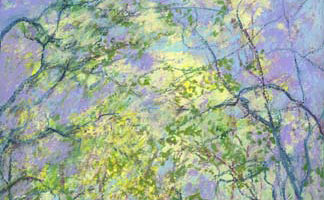Teaching the Laws of Modesty in Jewish Schools
Education
When I think back on my Orthodox high school Jewish education, the majority of what I can remember has to do with the laws of modesty. One year my Jewish law class spent the entire year going through a book called Hatznea Lechet (The Modest Way), a compendium of sources having to do with how women should comport themselves in order to live modest lives. The title of the book comes from the Book of Micah, where the prophet explains what God requires of the people:“only to do justly, to love mercy, and to walk humbly [or modestly] with thy God.” Modesty, the book asserts, is one of the three main pillars of Jewish life.
I have no objection to modesty as a concept. On the spectrum between pride and modesty, I certainly aim to fall much closer to modesty. The problem is that modesty as taught, particularly to Jewish girls, is not a concept of mentality and thoughtfulness, it’s about physical appearance. In addition to the hundreds of hours I spent studying texts about the evils of wearing pants, the girls at my school were subjected to seemingly endless lectures on the nuances of the school dress code. When a new principal took over in the middle of my freshman year, his first point of order when speaking to students was that he was going to crack down on girls whose skirts did not cover the entirety of their knees. He also decided that the previous rule that all girls’ sleeves had to come to at least mid-bicep was not good enough. After he took over sleeves had to go all the way to the elbow.
I rolled my eyes at the time (though, to be honest, I rolled my eyes at everything when I was 14 ) but I bought into the basic concept of modest dress as it was explained to me: by covering up and deemphasizing the physical I was allowing people to focus on my personality and “true self,” and not just my physical appearance. My physical appearance was distracting for men, and by dressing modestly I could ensure that they wouldn’t be judging me purely on what I wore or looked like —they would be able to see me for who I really was.
Even if we decide to generously set aside the rape culture that is implicit in this idea —it was my responsibility as a woman, and my rabbis’ responsibility as my authorities, to do whatever possible to minimize distractions for men, not any man’s responsibility to get ahold of himself of he found himself distracted by my apparently devastatingly sexy biceps —it ends up simply shifting the judgment one notch over. Piety, I learned, could be immediately assessed by looking at someone’s outfit. If her knees were visible, if she wore pants, if she didn’t cover her hair after marriage or did so only in a certain way—all of these things could tell me volumes about her commitment to God and Torah, not to mention whether she was a good person.
So much of what I learned in high school has, mercifully, faded or washed away completely since then. I like to think of myself as committed to God and Torah, and as a good person, but my life would probably not be recognizable as such to my high school teachers, in that I wear pants and regularly French kiss my spouse in public. One thing that has stuck with me is the habit of judging Jewish women I meet based on what they wear. When I meet a woman in my neighborhood wearing jeans and a t-shirt, I don’t assume I know anything at all about her. When I’m introduced to a woman in a skirt that goes to her knees, with a headband that may or may not be a really nice fall, I have to work hard to turn off the part of my brain that quickly attempts to calculate just how religious she really is.
I wish all that time spent on the intricacies of female dress and appearance had been spent teaching me a wider and more complex take on modesty. If I could go back to my teenage self I’d tell her to hide a Bible in her copy of Hatznea Lechet and spend those hours studying the story of King David, a man who wrestles constantly with pride and modesty, who is known for being beautiful, but is none- theless taken seriously as a leader. King David is ultimately a tragic figure, but I learned more from him and his story—when I finally studied it with a chevruta that met in a bar when I was 25 —than I ever did from Hatznea Lechet.


